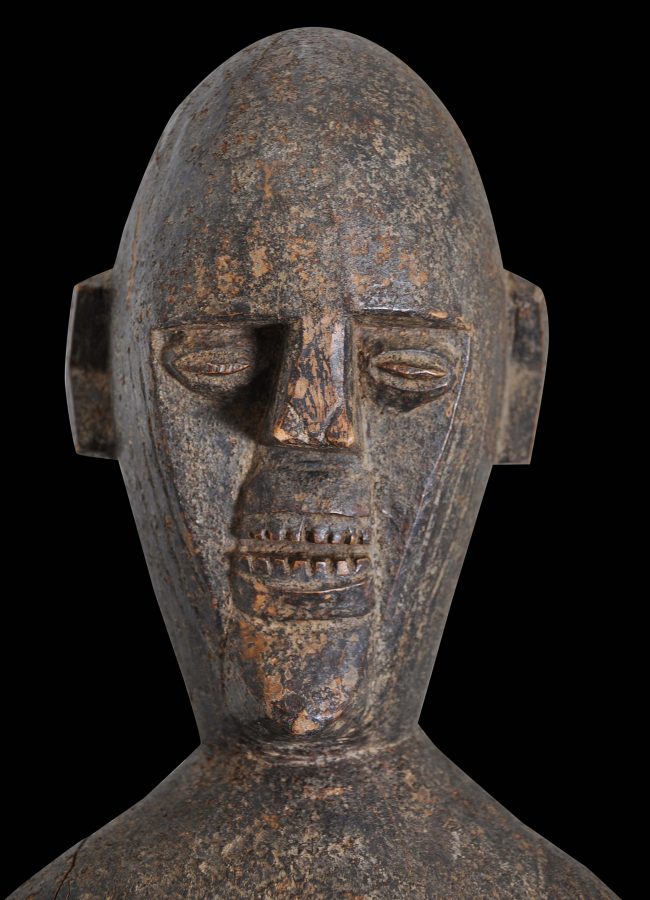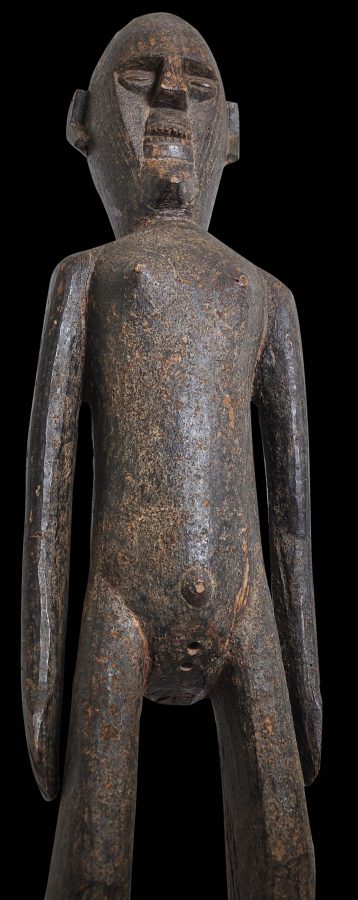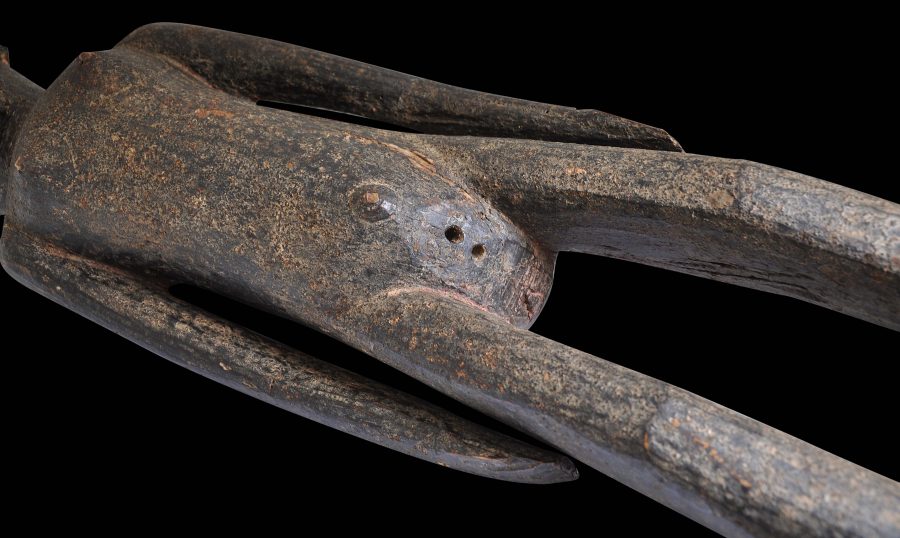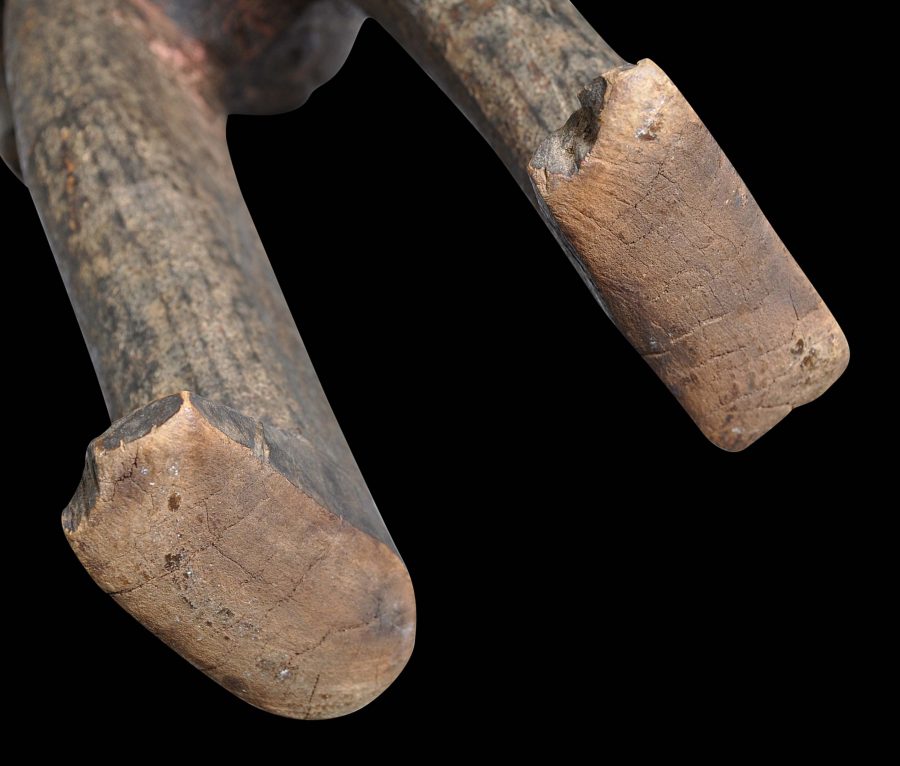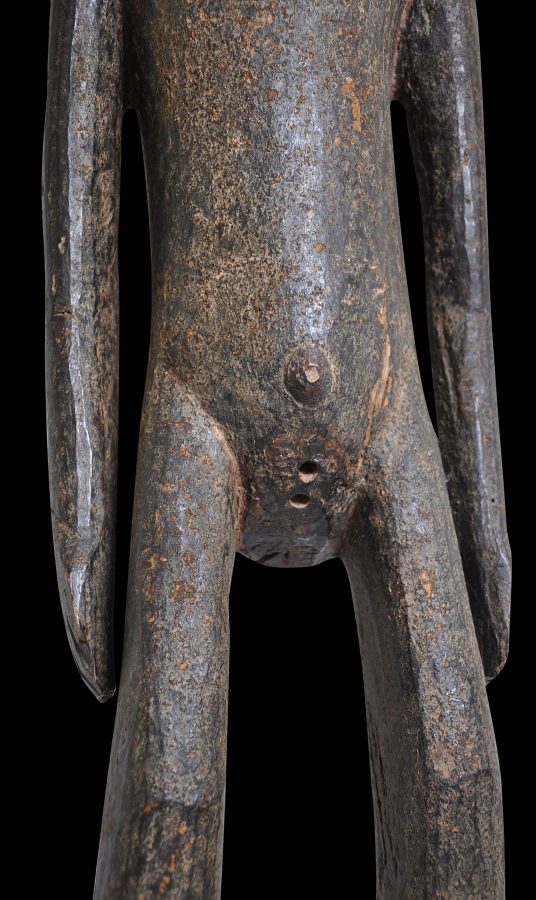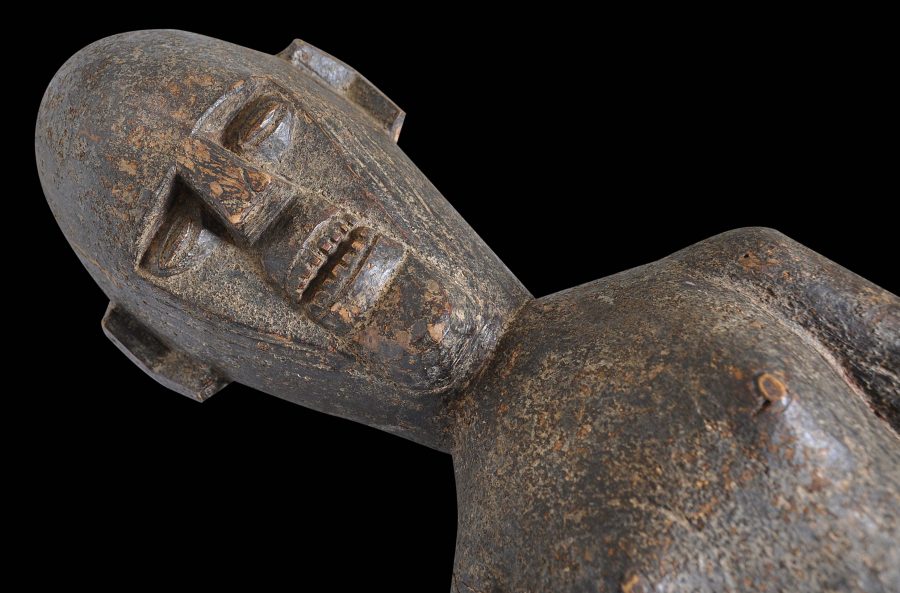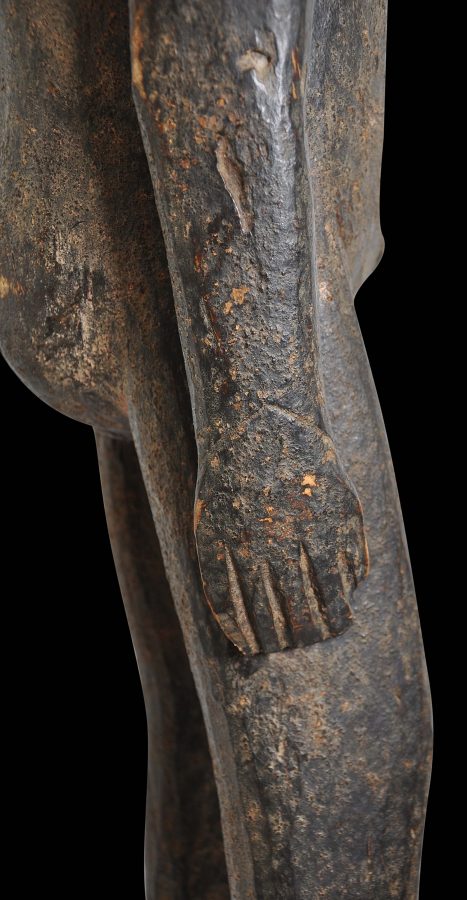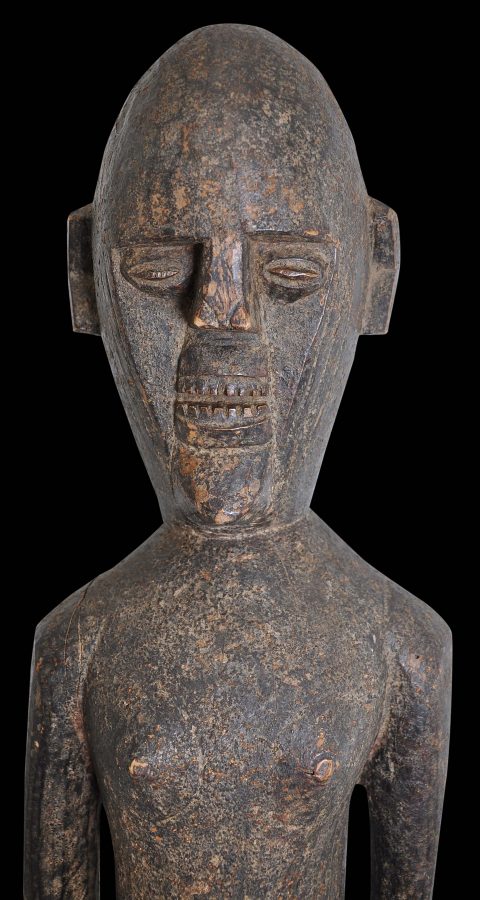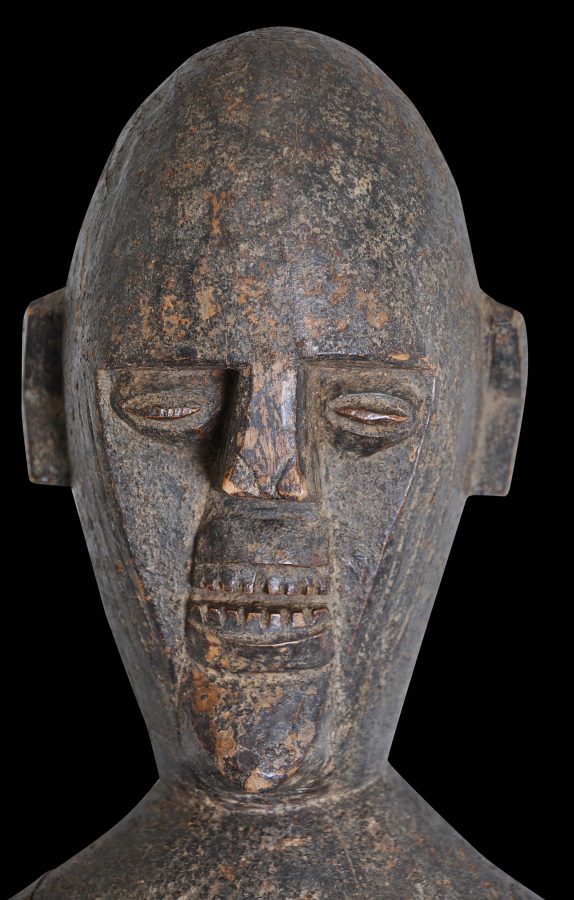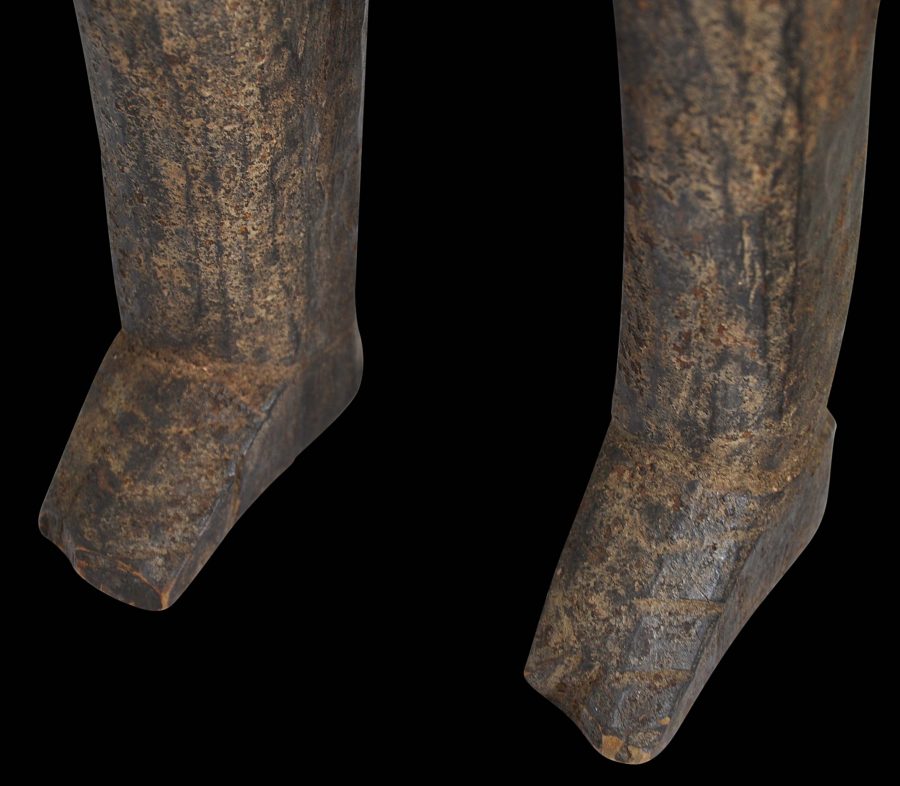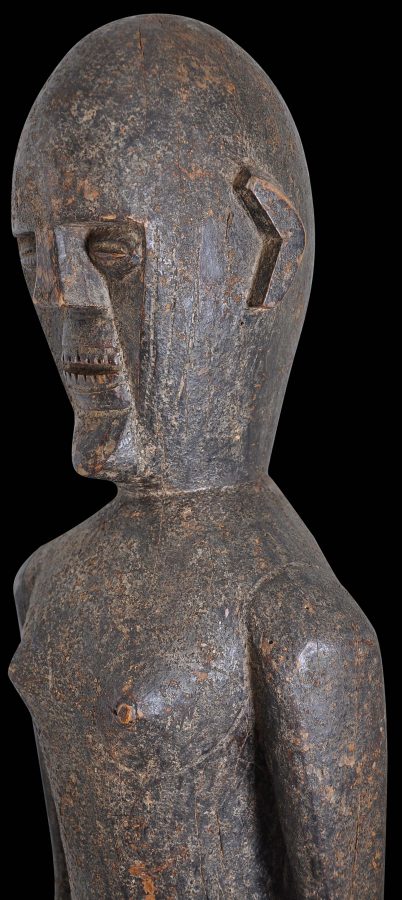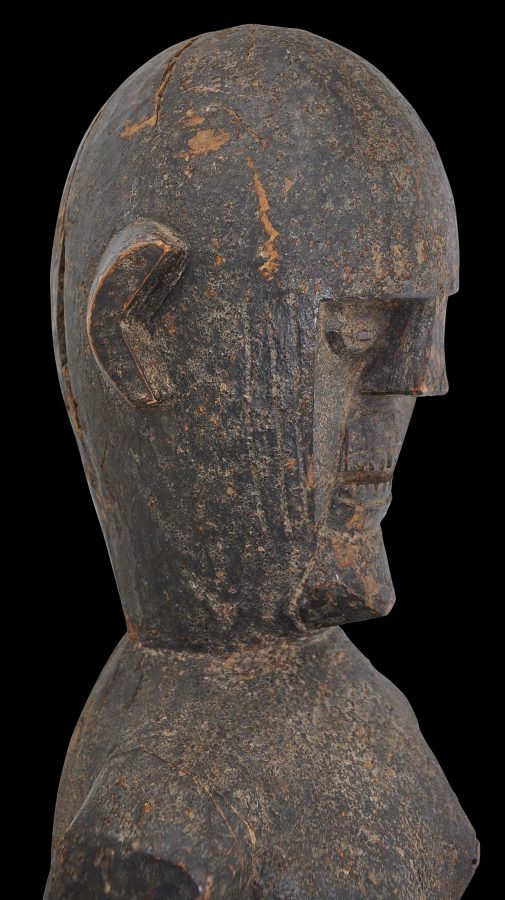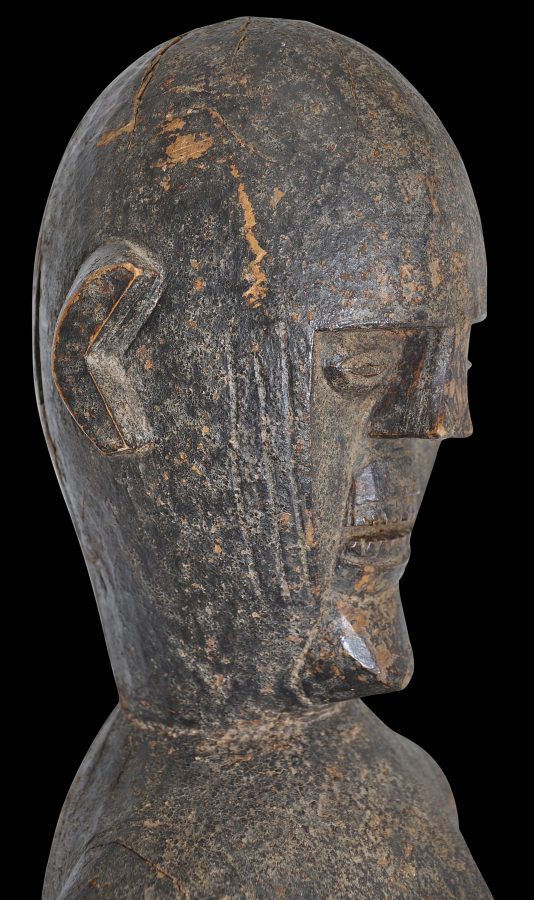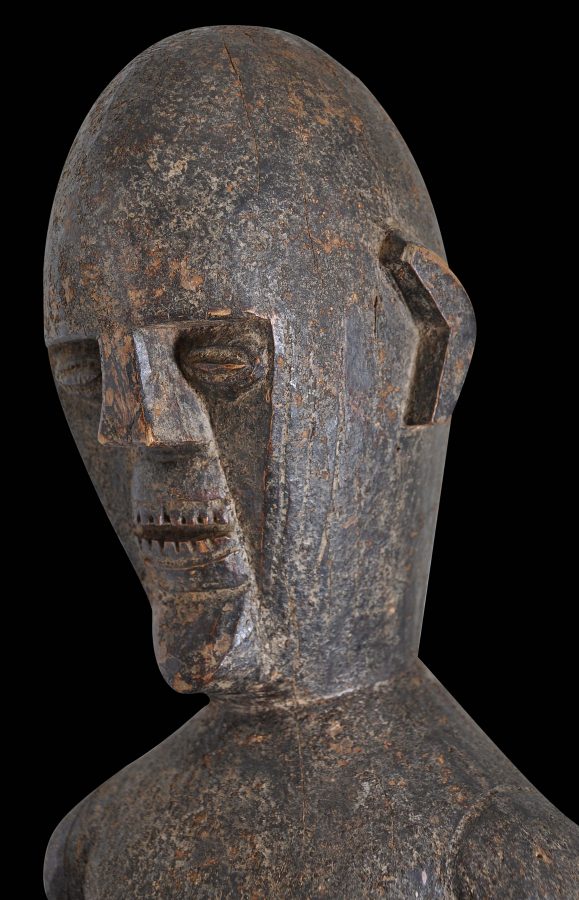This Naga figure of a woman is carved from a single piece of hardwood. It has a worn, encrusted patina. The figure has an elongated, bulbous head; elongated arms and legs; a barrel chest; and small feet. The arms and legs are bent slightly which seems a common feature among Naga figures. The face has the squarish features associated with Naga imagery. There are chiselled ‘tattoo’ marks on either side of the face, and the teeth are bared and prominent. The breast are small and pointy and the pelvic area is anatomically correct!
The wood is dense and heavy, but despite this, the figure has been well carved with good balance and is able to stand upright on its feet unsupported.
Most probably, the figure was carved to decorate a Morung building – a communal house that served as a meeting place for men, as a sleeping place for adolescents and bachelors, and as a shelter for ritual objects. Each clan tended to have a morung and so there would be several morung buildings in a typical village. Barbier (1984, p. 20) mentions that a large Konyak Naga village might have had as many as eleven morung. The dark patina of this figure suggests that it was kept inside a morung rather than being used to decorate its exterior. Barbier (1984) illustrates several wooden figures with similar darkened patinas and concludes that these had been stored inside rather than outside. Saul (2005, p. 89) says that such figures were lashed to the central posts inside each morung.
Possibly, the figure also served as a funerary effigy, as a temporary residence for the soul of the recently departed, although its use as a morung figure is more likely.
The figure has an excellent patina. There is the expected age and shrinkage-related cracking to the wood, but this is stable. The figure has a commanding, arresting even, presence, particularly when displayed elevated on a plinth.
References
Barbier, J. P., Art of Nagaland: The Barbier-Müller Collection, Geneva, Los Angeles County Museum of Art, 1984.
Jacobs, J., The Nagas: Hill Peoples of Northeast India, Thames & Hudson, 1990.
Saul, J.D., The Naga of Burma: Their Festivals, Customs and Way of Life, Orchid Press, 2005.



